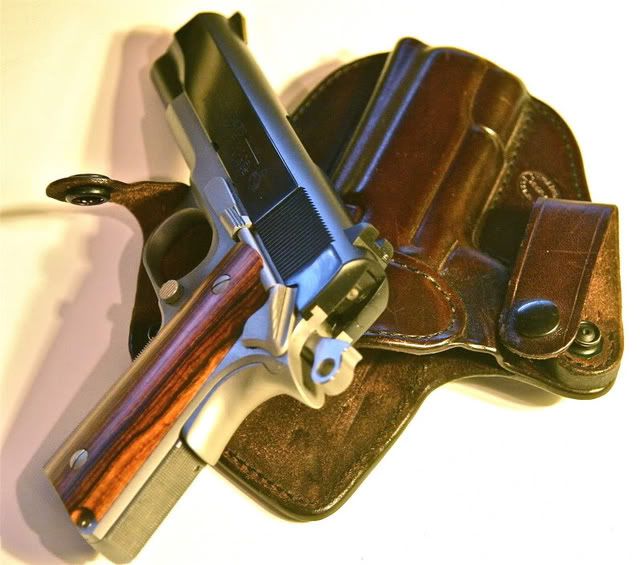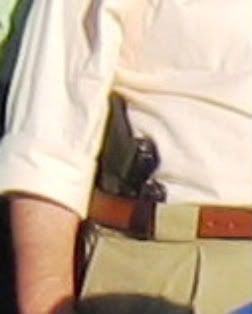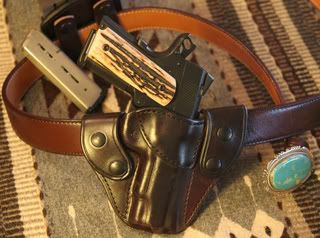Tactical Alex
New member
Well after an interesting start at least I can say with certainty that I do feel there's plenty of room for further discussion about Holsters. Of course I will try to make it much less lecturer and ask from the very beginning that I am in fact looking for opinions and experiences related to the topic.
That said I'd like to start with Shoulder Rigs, because I got a PM from a young woman who described a rather frightening ordeal she just recently went through. Thankfully she was not harmed, but she has decided she to take the next step towards self-defense.
Long story short she was mostly interested in a shoulder holster for carry while driving. I'd like to throw a few things of my own out here and would appreciate some other opinions and feedback.
A Shoulder Rig can be very effective in a vehicle scenario as it puts the firearm in a very easily accessible location, you can carry all the way up to a full sized pistol, and they usually already have places to keep things like spare magazines, seat-belt cutters, or flashlights. Each tool can become very useful through out any number of different possible encounters.
I'd like to hit some of the downsides. These Holsters can get uncomfortable sometimes with prolonged wear. They also really limit your options of wardrobe. There's no way around the fact you have to wear something over it to hide it, and then once your seat-belt is fastened this can restrict that garment to your body making it more difficult to reach the firearm. Don't forget the direction the pistol is canted can play a huge role here.
This particular woman was planning on carrying a small revolver or a compact pistol. So I'd suggest that if you're going to use smaller pistols from the beginning, I've had better experiences with ankle holsters for driving scenarios. There's also always the option of concealing the weapon within the car itself, and not on your person. Under the seat, in the door well, under the dash, there's a few different options. Down side then becomes you don't have it on you if you have to leave the vehicle in a hurry.
My personal advice, since she's planning on using smaller pistols would be to go with an ankle holster if she's determined to wear on her person.
More is better though everyone so please if you have an opinion or have some experience with these topics please let's hear it.
That said I'd like to start with Shoulder Rigs, because I got a PM from a young woman who described a rather frightening ordeal she just recently went through. Thankfully she was not harmed, but she has decided she to take the next step towards self-defense.
Long story short she was mostly interested in a shoulder holster for carry while driving. I'd like to throw a few things of my own out here and would appreciate some other opinions and feedback.
A Shoulder Rig can be very effective in a vehicle scenario as it puts the firearm in a very easily accessible location, you can carry all the way up to a full sized pistol, and they usually already have places to keep things like spare magazines, seat-belt cutters, or flashlights. Each tool can become very useful through out any number of different possible encounters.
I'd like to hit some of the downsides. These Holsters can get uncomfortable sometimes with prolonged wear. They also really limit your options of wardrobe. There's no way around the fact you have to wear something over it to hide it, and then once your seat-belt is fastened this can restrict that garment to your body making it more difficult to reach the firearm. Don't forget the direction the pistol is canted can play a huge role here.
This particular woman was planning on carrying a small revolver or a compact pistol. So I'd suggest that if you're going to use smaller pistols from the beginning, I've had better experiences with ankle holsters for driving scenarios. There's also always the option of concealing the weapon within the car itself, and not on your person. Under the seat, in the door well, under the dash, there's a few different options. Down side then becomes you don't have it on you if you have to leave the vehicle in a hurry.
My personal advice, since she's planning on using smaller pistols would be to go with an ankle holster if she's determined to wear on her person.
More is better though everyone so please if you have an opinion or have some experience with these topics please let's hear it.




